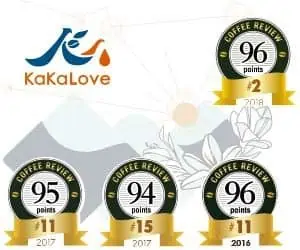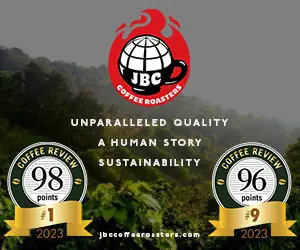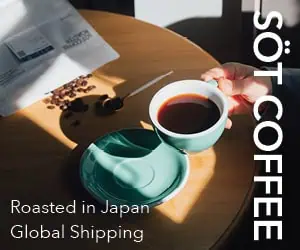The coffees reviewed this month all offer the sort of heartily complex cup that suggests fires, throws, and warm, rich kitchen recoveries from the elements (or, in warmer climates, recoveries from holiday traffic jams). And most originate on the gigantic islands of southeast Asia: Sumatra, Sulawesi (Celebes), Timor and New Guinea. They are an altogether rather exceptional group of coffees, all comfortable owing to their low acidity but consoling in richness and range of nuance.
For those hazy on their southeast Asia geography, the sources for most of these coffees are very large islands located in the great crescent of islands stretching from the tip of Malaysia eastward to north of Australia. Sumatra (the easternmost of these islands) and Sulawesi are part of Indonesia; East Timor is now independent, and Papua New Guinea occupies the eastern half of the mammoth island of New Guinea.
The Sumatra-Sulawesi Syndrome
Sumatra and Sulawesi are most famous for their peasant-processed coffees that, owing to a peculiar approach to fruit removal and drying (see Why Sumatra Coffees Taste the Way They Do), acquire low-toned fruit and musty or mildewed tones that can bestow nuance on the cup ranging from leather through pipe tobacco to earth to mushrooms to a sort of herby chocolate. East Timor coffees share these shifty characteristics, though in subtler and less intense ways than traditional Sulawesis, which are without a doubt the most eccentric tasting of the world’s coffees. Some peasant-processed Papua New Guineas may share a tickle of the creative processing taints that mark the preceding three origins, but Papua New Guineas in general tend to be melodic, fragrant coffees whose surprises are subtler and less likely to shock a conventional palate.
Risking an 89 on a Sulawesi
I have stuck my neck out in this review and gave a relatively high rating (89) to one rather outrageously wild tasting Sulawesi from the Roasterie. To me, this coffee fulfilled the criteria for a fine traditional Sulawesi: full and sweetly robust rather than stingy and thin, with the pronounced musty/mildew tones reading as complexly (if wildly) nuanced rather than sharp and hard. Given that peaty, almost phenolic single-malt scotches are admired in the world of specialty beverages, it seems to me that such Sulawesis deserve similar admiration.
Sweet New Guineas
On the other hand, the Papua New Guinea reviewed here are quite easy to admire using conventional criteria. These are coffees that share the virtues of certain softer Central America coffees, with their low-key, vibrant acidity and natural sweetness. But the complex flavor notes displayed by Papua New Guineas are often surprising and pleasingly unpredictable, ranging from the sweet grapefruit notes so prominent in some high-grown plantation Papua New Guineas to the apple, leather and chocolate tones prominent in those reviewed here.
Of the four origins represented in this review, the Papua New Guineas as a group attracted the highest ratings, which supports what many of us know already; that this origin, barely recognized among specialty coffee consumers, is among the world’s finest.
Blends and Complexity
Finally, we reviewed two blends that share the low-toned, hearty complexity of this month’s single-origin coffees. The backbone of the Nakatosh blend comes from coffees with a musty, nutty nuance, perhaps Sumatras, and the delicately rich, bittersweet Celebration Caffe from Allegro Coffee clearly depends in part on a component of fine Sumatras for its distinction.
Nevertheless, when placed in the context of single-origin coffees as intricately nuanced as the best of those reviewed here, an argument for the superior complexity of blends is difficult to sustain. As I cupped some of these samples I found myself repeatedly convinced that I was dealing with a blend, only to discover after the cupping that the range of sensation that intrigued me came from a single origin, the product simply of the interaction of nature and the impact of traditional methods of fruit removal and drying.
2003 The Coffee Review. All rights reserved.










